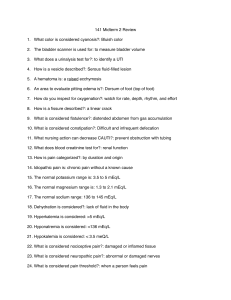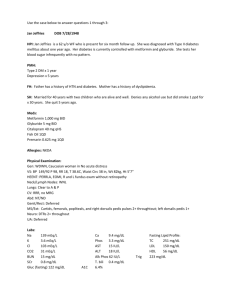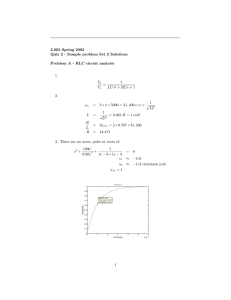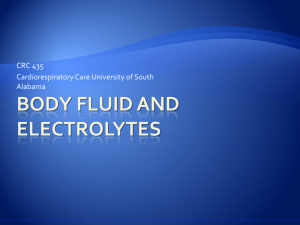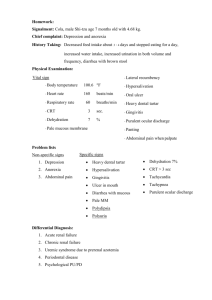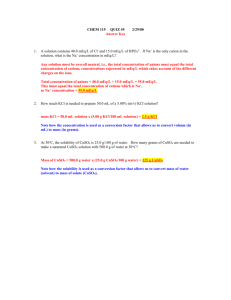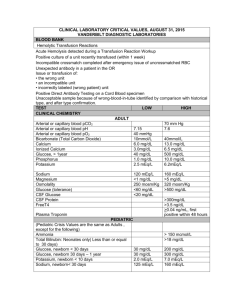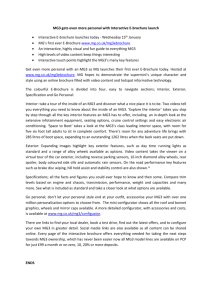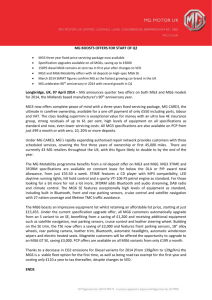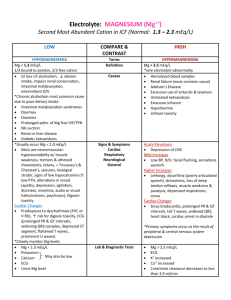Pediatric Vital Signs & Electrolyte Reference Chart
advertisement
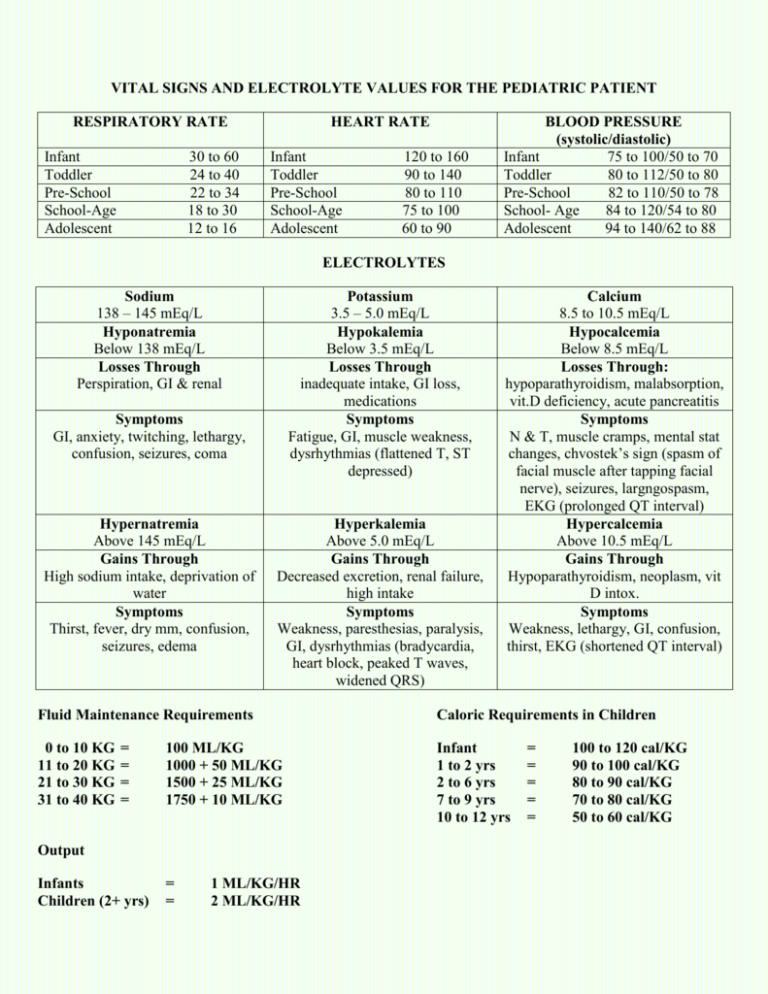
VITAL SIGNS AND ELECTROLYTE VALUES FOR THE PEDIATRIC PATIENT RESPIRATORY RATE Infant Toddler Pre-School School-Age Adolescent 30 to 60 24 to 40 22 to 34 18 to 30 12 to 16 HEART RATE Infant Toddler Pre-School School-Age Adolescent 120 to 160 90 to 140 80 to 110 75 to 100 60 to 90 BLOOD PRESSURE (systolic/diastolic) Infant 75 to 100/50 to 70 Toddler 80 to 112/50 to 80 Pre-School 82 to 110/50 to 78 School- Age 84 to 120/54 to 80 Adolescent 94 to 140/62 to 88 ELECTROLYTES Sodium 138 – 145 mEq/L Hyponatremia Below 138 mEq/L Losses Through Perspiration, GI & renal Potassium 3.5 – 5.0 mEq/L Hypokalemia Below 3.5 mEq/L Losses Through inadequate intake, GI loss, medications Symptoms Fatigue, GI, muscle weakness, dysrhythmias (flattened T, ST depressed) Symptoms GI, anxiety, twitching, lethargy, confusion, seizures, coma Hypernatremia Above 145 mEq/L Gains Through High sodium intake, deprivation of water Symptoms Thirst, fever, dry mm, confusion, seizures, edema Hyperkalemia Above 5.0 mEq/L Gains Through Decreased excretion, renal failure, high intake Symptoms Weakness, paresthesias, paralysis, GI, dysrhythmias (bradycardia, heart block, peaked T waves, widened QRS) Calcium 8.5 to 10.5 mEq/L Hypocalcemia Below 8.5 mEq/L Losses Through: hypoparathyroidism, malabsorption, vit.D deficiency, acute pancreatitis Symptoms N & T, muscle cramps, mental stat changes, chvostek’s sign (spasm of facial muscle after tapping facial nerve), seizures, largngospasm, EKG (prolonged QT interval) Hypercalcemia Above 10.5 mEq/L Gains Through Hypoparathyroidism, neoplasm, vit D intox. Symptoms Weakness, lethargy, GI, confusion, thirst, EKG (shortened QT interval) Fluid Maintenance Requirements Caloric Requirements in Children 0 to 10 KG 11 to 20 KG 21 to 30 KG 31 to 40 KG Infant 1 to 2 yrs 2 to 6 yrs 7 to 9 yrs 10 to 12 yrs = = = = 100 ML/KG 1000 + 50 ML/KG 1500 + 25 ML/KG 1750 + 10 ML/KG Output Infants Children (2+ yrs) = = 1 ML/KG/HR 2 ML/KG/HR = = = = = 100 to 120 cal/KG 90 to 100 cal/KG 80 to 90 cal/KG 70 to 80 cal/KG 50 to 60 cal/KG
